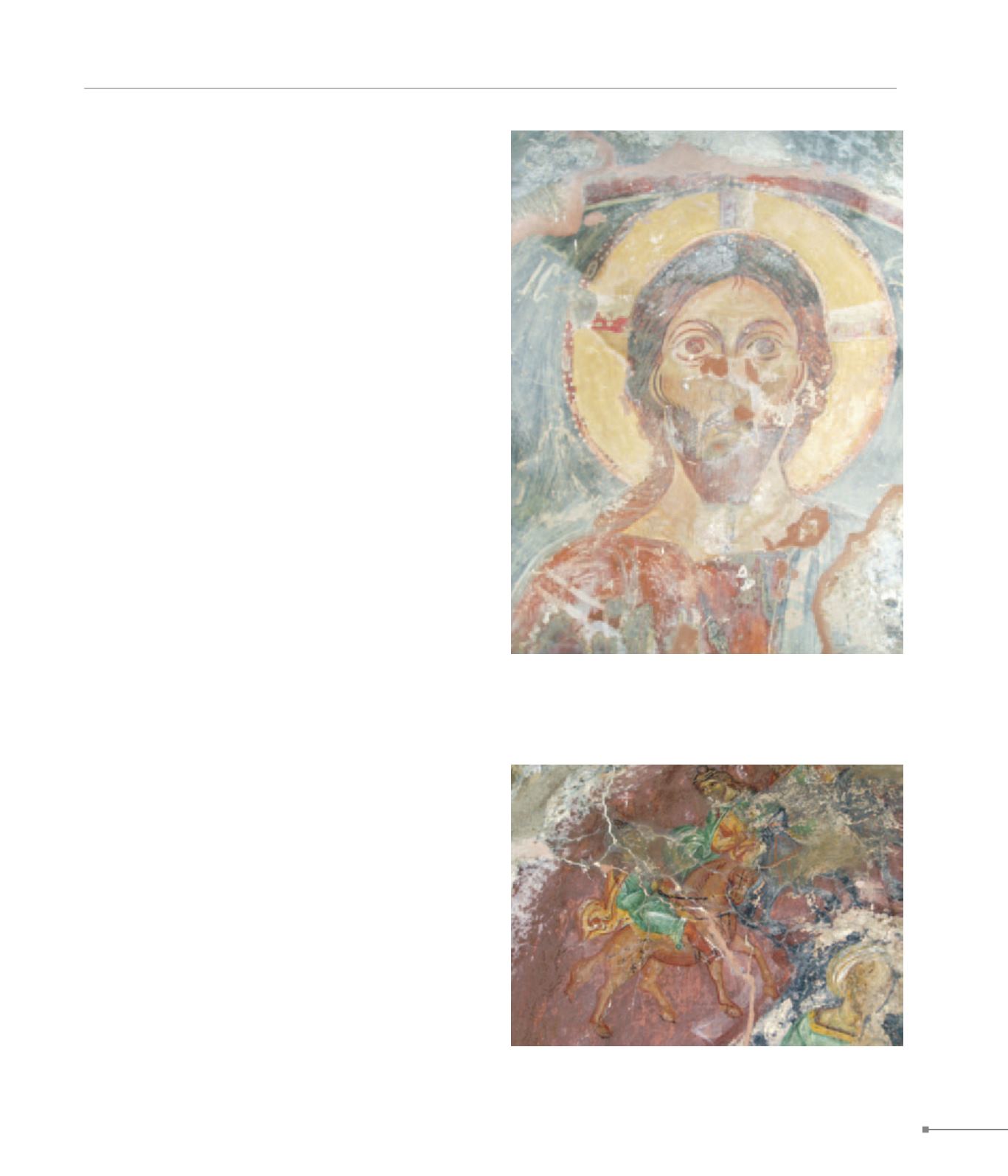
Frati.
Chromonasteri.
CRETE
259
397.
Frati.
At a rural location there survives the ruined, cross-in-square
church of Saint George with remnants of frescoes. The church
can be dated to the early 13th c.
398.
Lampine.
In the centre of the village is Panagia Lampine, a domed
cross-in-square church, dating to the late 12th c., with strongly
projecting horizontal crossarms. Based on the inscription ac-
companying the scene of the Panagia Platytera, it has been
supposed that the name Lampine is associated with the see
of La(m)pe, which was transferred to the village from its origi-
nal seat in the second Byzantine period. There are at least
three layers of frescoes. The first dates from the late 12th c.,
the second from the mid-13th c., and the third from the early
14th c. E of Lampine is the small, barrel-vaulted, single-nave
church of Saint George with wall-paintings of the second half
of the 13th c.
399.
Chromonasteri.
In the small village of Perdike Metochi stands the transitional,
aisleless, domed church of Aghios Eutychios. It is an elon-
gated structure originally of greater width and of different ar-
chitectural type. Part of the E wall and the large semicircular
apse survive from the original church. The archaic frescoes
date from the mid-11th c. Panagia Kera, an aisleless, domed
church with two conches at the sides, is situated at a rural
location of Chromonasteri. In subsequent years a built altar
screen was created and a higher, barrel-vaulted narthex was
added to the W. Later the barrel-vaulted aisle of Saint Anne
was added in the S. Parts of two layers of 12th c. frescoes
are found in the bema, and those of the early 15th c. on the
remaining surfaces. At Rousospiti is found the single-nave
church of Panagia with a later addition in the W. The church
features wall-paintings of the early 14th c., just like the church
of Panagia at Prasses. At Selli the decoration in the church of
Saint John Theologos dates to 1411. At the Onythe site, near
Goulediana, remains of a timber-roofed, three-aisled basilica
with mosaic floors (5th c.) have been excavated.
399. Chromonasteri, Panagia Kera, wall painting of the second layer
(Χρωμοναστήρι, Παναγία Κερά, τοιχογραφία β’ στρώματος)
399. Chromonasteri, Panagia Kera, wall painting of the first layer
(Χρωμοναστήρι, Παναγία Κερά, τοιχογραφία α’ στρώματος)


